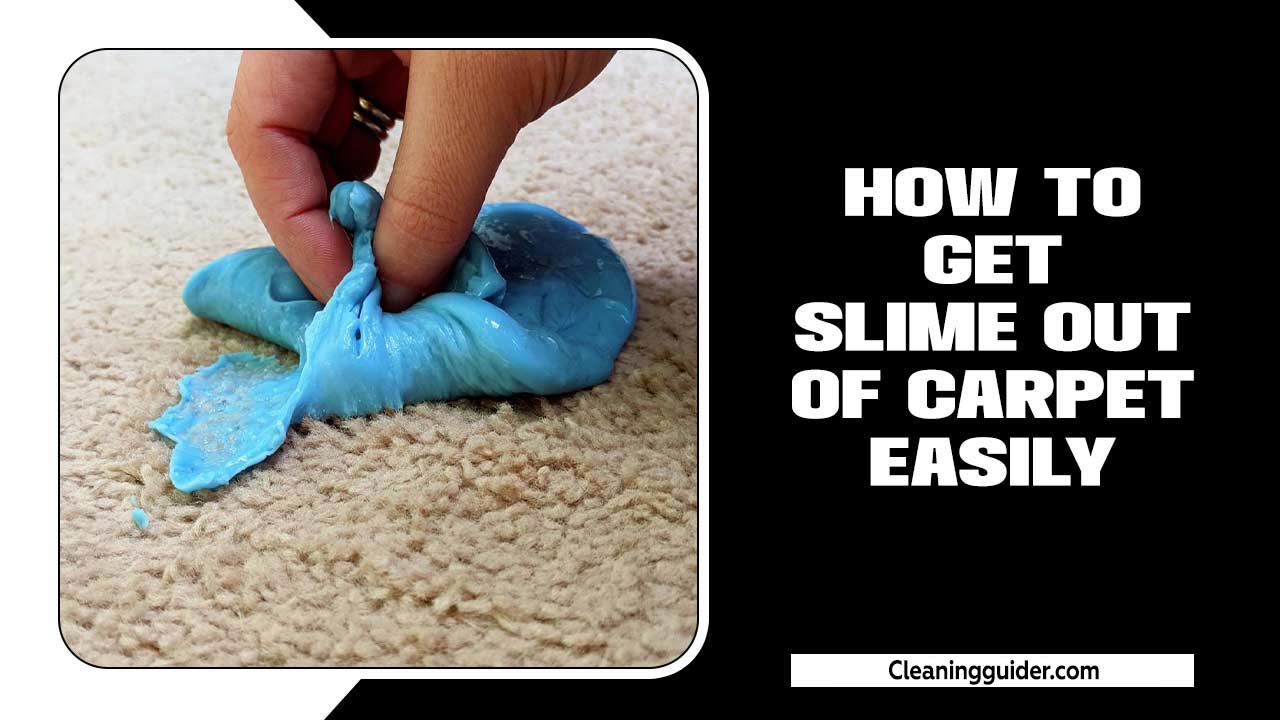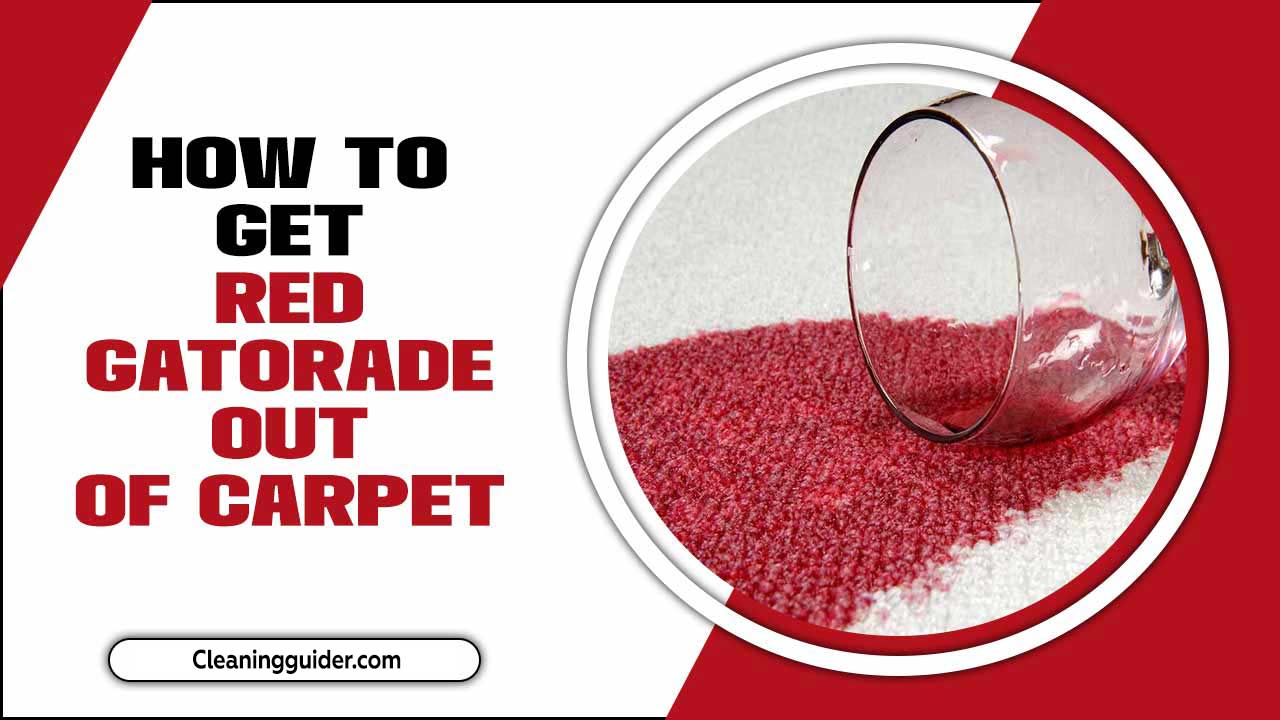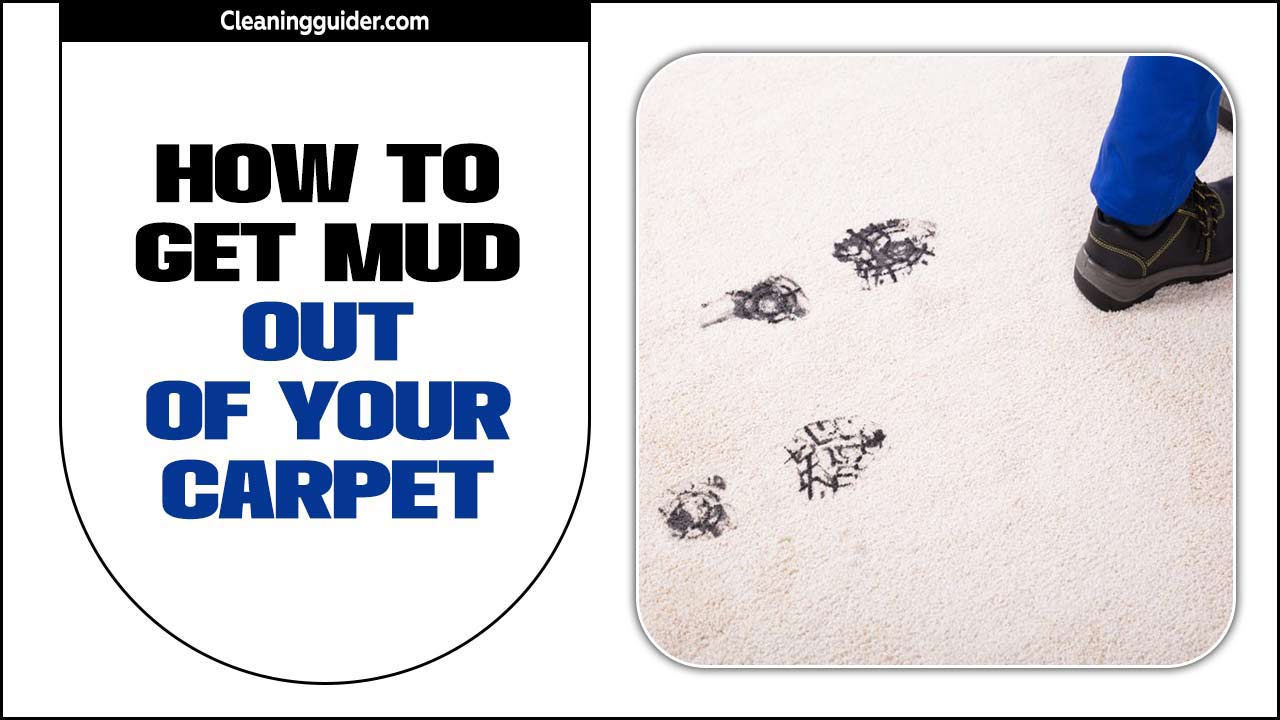Mold is a common household problem that can cause unsightly stains and potential health hazards. Regarding carpets, mold growth can quickly spread and become a difficult and expensive issue to tackle.
From musty odors to respiratory issues, mold in carpets can greatly impact the overall cleanliness and safety of your home. Therefore, knowing how to remove mold from your carpet properly is crucial for maintaining a healthy and hygienic living space.
Here we will walk you through seven different ways how to get mold out of carpet step-by-step. We’ll also discuss DIY vs professional options for removing mold from carpets and whether or not it’s possible to eliminate mold infestations. We’ll wrap up with tips for maintaining a mold-free carpet and preventing future growth, as well as common mistakes to avoid when removing mold from your carpet.
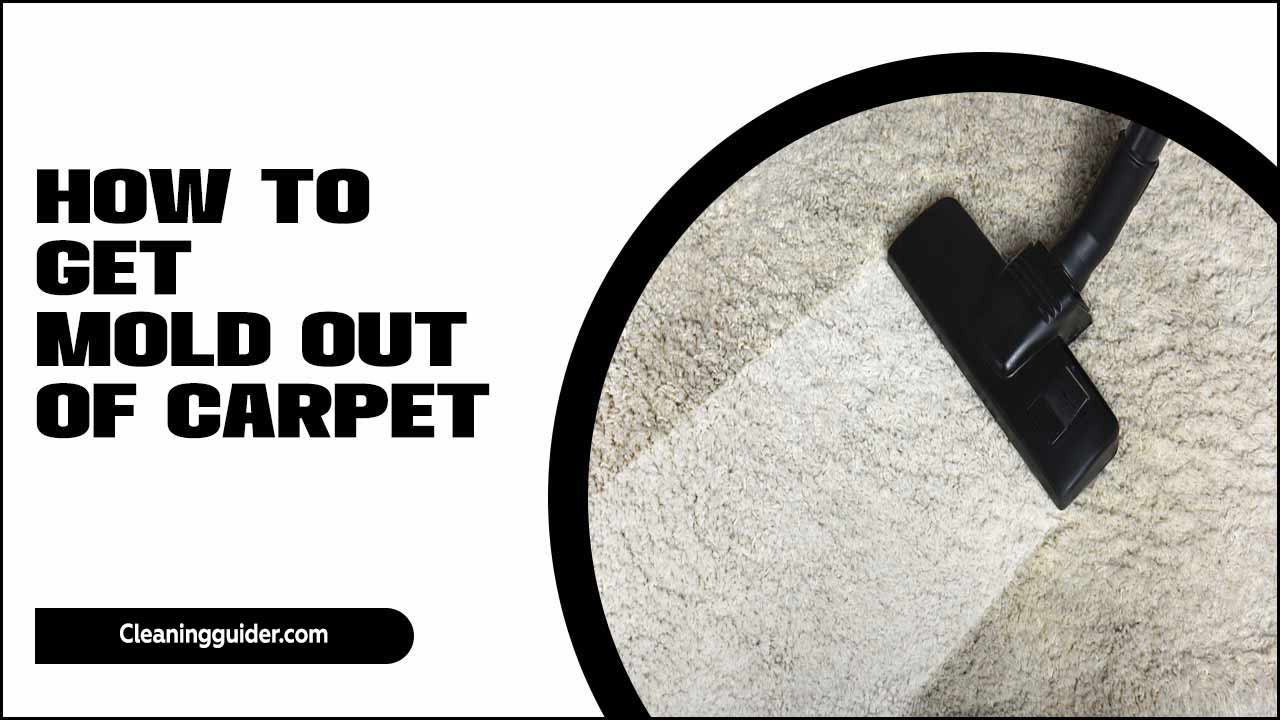
Why Does Mold Grow On Carpets?
Mold can grow on carpets for a variety of reasons. One of the main factors is moisture. Carpets exposed to excessive moisture, whether from spills, leaks, or high humidity levels, create a perfect environment for mold growth.
Additionally, if a carpet is not properly cleaned and maintained, dust and dirt particles can accumulate and provide nutrients for mold to thrive. Poor ventilation in a room can also contribute to mold growth on carpets. It is important to address any underlying moisture issues, regularly clean and vacuum carpets, and ensure proper airflow to prevent and remove mold from carpets.
How To Get Mold Out Of Carpet In 7 Ways
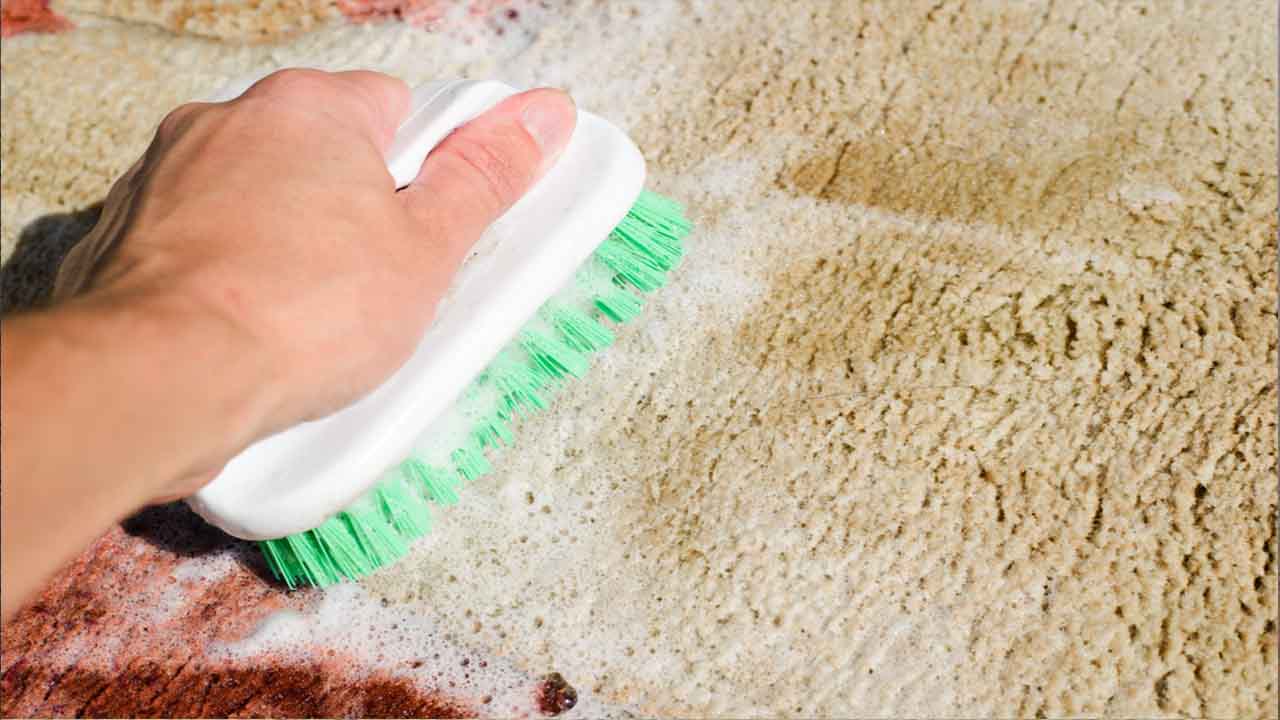
Mold in carpets can cause health issues and allergic reactions, posing a risk to family members, especially those with asthma. Also, carpets’ mould growth can result in a musty smell, affecting the overall indoor air quality. Getting rid of mold in your carpet is essential for maintaining a clean and healthy home environment.
Prevention is key to avoiding future mold growth. Keep your carpets clean and dry, maintain proper ventilation in your home, and address any moisture issues promptly to minimize the risk of mold growth. Here are 7 ways effectively how to get mold out of carpet:
1.Identify The Affected Areas
To effectively tackle mold in your carpet, it’s crucial first to identify the affected areas. Inspect the carpet for any visible signs of mold growth or stains. Additionally, be on the lookout for a musty odor emanating from the carpet, as this can indicate the presence of mold. Check for dampness or discoloration in specific areas, as these can be telltale signs of mold infestation.
It’s also important to pay attention to any respiratory symptoms caused by mold exposure. To thoroughly examine the carpet, use a flashlight to inspect hard-to-reach areas. By identifying the affected areas, you can take targeted steps to eliminate mold and ensure a healthier environment for you and your family.
2.Wear Protective Gear

To ensure your safety when dealing with mold in carpets, it’s important to wear the right protective gear. Start by putting on rubber gloves to protect your skin from mold spores. Additionally, wear eye protection, such as goggles, to prevent eye irritation. Use a face mask to avoid inhaling mold spores, which can be a health hazard.
To prevent cross-contamination, use disposable clothing or coveralls. It’s also crucial to ensure proper ventilation in the area to reduce the concentration of mold spores. By taking these precautions, you can safely tackle mold removal from your carpet without risking your health.
3.Dry The Affected Area
It is important to reduce the humidity levels to dry the affected area and prevent further mold growth. This can be achieved using a dehumidifier or opening windows to allow fresh air circulation. Directing airflow towards the affected area is also beneficial, as this aids in drying.
Absorbing excess moisture with towels or a wet/dry vacuum cleaner is crucial in removing any remaining moisture. Consider using fans to speed up the drying process. Remember, it is essential to avoid leaving the carpet wet for an extended period, which can lead to mould growth.
4.Vacuum The Carpet

To effectively remove mold from your carpet, use a vacuum cleaner with a HEPA filter. This special filter will help to capture and contain mold spores, preventing them from spreading further. Be sure to vacuum the entire carpet, including the surrounding areas, as mold can easily spread to adjacent surfaces.
Pay extra attention to areas where mold is visible or has been identified. After vacuuming, promptly empty the vacuum bag or clean the canister with bleach or a mold remover solution to prevent the spores from lingering. Remember, proper vacuuming is crucial in removing mold and maintaining a healthy environment for you and your family.
5.Apply A Mold Remover Solution
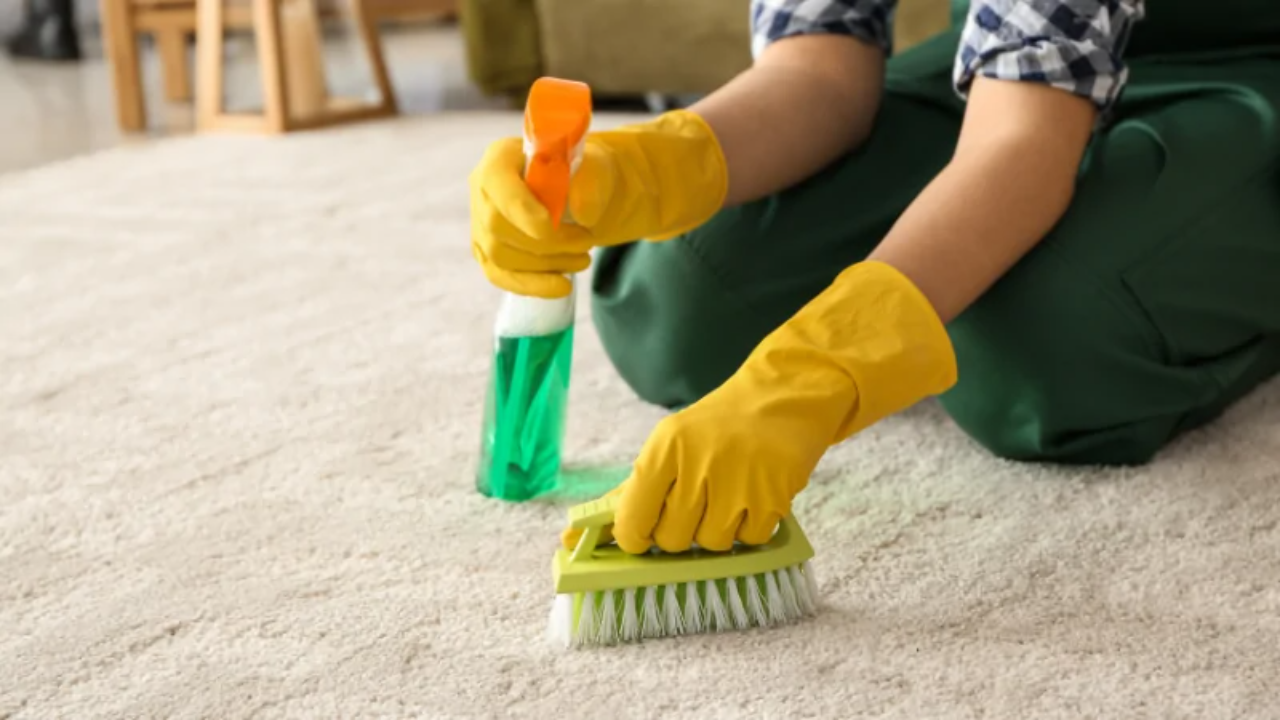
To effectively remove mold from your carpet, mix a mold remover solution using vinegar and water in a spray bottle. Afterward, generously apply the solution to the affected areas of the carpet, allowing it to sit for a few minutes to penetrate the mold.
If preferred, a commercial mold cleaner can also be used, following the instructions provided by the manufacturer. However, it is essential to avoid oversaturating the carpet to prevent excessive moisture. Utilizing either of these solutions can effectively eliminate mold growth and prevent any potential health hazards it may pose to you and your family members.
6.Scrub Gently
To effectively remove mold from your carpet, it’s important to scrub gently. Using a soft-bristle brush or sponge, carefully scrub the affected areas in circular motions. This will help dislodge the mold from the carpet fibers without causing damage. Avoid using excessive force, as it can lead to permanent carpet damage.
Rinse the brush or sponge regularly to remove any loosened mold particles. Repeat the scrubbing process until the mold is visibly reduced or removed. By scrubbing gently, you can eliminate mold from your carpet without causing further harm.
7.Rinse And Dry
To thoroughly remove any remaining mold residue or cleaning solution from the carpet, it is important to rinse it thoroughly with clean water. This will help ensure that no traces of mold are left behind. After rinsing, use a wet/dry vacuum cleaner or clean, absorbent towels to extract any excess moisture from the carpet.
This will aid in drying and prevent mould growth due to remaining moisture. Allowing the carpet to air dry completely is crucial before reintroducing furniture or foot traffic. This will help prevent any potential mold regrowth or musty odors. To further prevent future mold issues, consider using a dehumidifier or maintaining low humidity levels in the area.
Safety Precautions Before Removing Mold From Carpets

Before attempting to remove mold from your carpet, taking certain safety precautions to protect yourself and prevent further contamination is important. By following these safety precautions, you can minimize your risk of exposure and ensure a safer cleaning process. Here are some tips to keep in mind:
- Wear Protective Gear: Wear gloves, goggles, and a mask to protect yourself from mold spores that may become airborne during cleaning.
- Ventilate The Area: Open windows and use fans to increase air circulation. This will help reduce the concentration of mold spores in the air.
- Contain The Affected Area: Use plastic sheeting or tape to seal off the area where the mold is present. This will prevent spores from spreading to other areas of your home.
- Keep Children And Pets Away: It is best to keep them out of the room while cleaning up mold, as they may be more susceptible to its harmful effects.
- Consult A Professional: If you are dealing with extensive mold growth or have concerns about your ability to remove it safely, it is recommended to seek professional help. They have the expertise and equipment necessary for effective mold remediation.
DIY Vs Hiring A Professional: What Should You Choose?
When getting mold out of carpet, you have two options: DIY or hiring a professional. The choice ultimately depends on the severity of the mold problem and your comfort level in tackling it yourself. If the mold is limited to a small area and you feel confident in your ability to remove it safely, DIY may be a cost-effective option.
However, if the mold covers a large area or if you have concerns about potential health risks, it is advisable to hire a professional mold remediation specialist. They have the expertise and specialized equipment to remove the mold and ensure it does not return. Professionals can also help identify the underlying cause of mold growth, such as water damage, and offer solutions to prevent future mold problems.
Common Mistakes To Avoid When Trying To Remove Mold From Carpet
When removing mold from carpet, it’s important to avoid common mistakes that can further damage or spread the mold spores. By avoiding these common mistakes, you can effectively remove mold from your carpet without causing further damage or risking the spread of mold spores. Here are some tips to keep in mind:
- Don’t Scrub The Mold: Scrubbing the mold can cause the spores to become airborne and spread to other areas of your home. Instead, gently blot the affected area with a clean cloth or sponge.
- Avoid Using Bleach: While bleach can kill mold on non-porous surfaces, it is ineffective on porous materials like carpet. Additionally, bleach can discolor or damage your carpet fibers.
- Don’t Use Excessive Water: Mold thrives in damp environments, so it’s important to avoid saturating your carpet with water during cleaning. Use minimal water and ensure that your carpet dries completely after cleaning.
- Skip DIY Remedies: While there are many DIY solutions for removing mold from carpets, it’s best to leave this task to professionals with the proper equipment and expertise.
Tips For Maintaining A Mold-Free Carpet
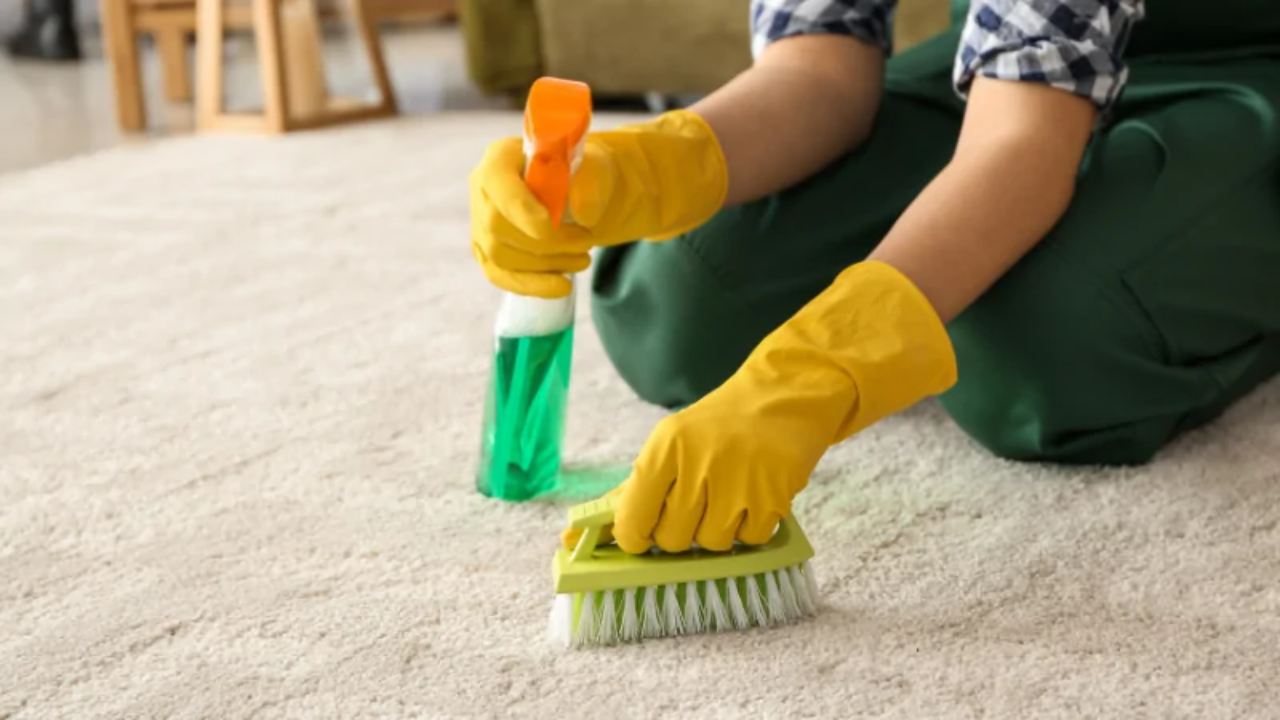
A mold-free carpet is crucial for a healthy and clean home environment. By following these tips, you can maintain a clean and mold-free carpet in your home. Here are some tips to help you keep your carpet free from mold:
- Clean Up Spills And Stains Immediately: Moisture can seep into the carpet fibers and create a breeding ground for mold. Make sure to blot up any spills or stains as soon as they occur.
- Vacuum Regularly: Regular vacuuming helps to remove dirt, dust, and other particles that can contribute to mold growth. Use a vacuum cleaner with a HEPA filter to ensure you effectively capture allergens and prevent them from settling in the carpet.
- Use Fans And Dehumidifiers: Proper air circulation and humidity control are key to preventing mold growth. Use fans and dehumidifiers in areas where moisture accumulates, such as basements or bathrooms.
- Steam Clean Periodically: Steam cleaning can help kill any existing mold spores and remove deep-seated dirt and allergens from the carpet. Consider hiring a professional steam cleaning service for the best results.
- Address Water Damage Promptly: If your carpet has been exposed to significant water damage, such as flooding or leaks, it is important to address the issue promptly. Remove any standing water, dry the area thoroughly, and consider replacing the carpet padding if necessary.
Prevention Tips To Avoid Future Mold Growth In Carpets
To maintain a clean and healthy living environment, preventing mould growth in carpets is essential. By following these prevention tips, you can minimize the risk of mold growth in your carpets and maintain a clean and healthy living space. Here are some tips to help you avoid future mold growth:
- Keep Your Carpets Clean And Dry: Regular vacuuming can help remove dirt, dust, and moisture from your carpets, preventing mold spores from taking hold. If your carpet gets wet, dry it thoroughly as soon as possible.
- Maintain Proper Ventilation: Good airflow can prevent excess moisture from accumulating in your home. Open windows, use fans or consider using a dehumidifier in areas prone to high humidity.
- Address Leaks Or Water Damage Promptly: If you notice any leaks or water damage in your home, such as a leaking pipe or roof, fix them immediately. Even small amounts of moisture can lead to mold growth over time.
- Use Breathable Materials: When choosing carpeting for your home, opt for materials that allow air circulation, such as natural fibers like wool or cotton. Avoid synthetic materials that can trap moisture and promote mold growth.
- Regularly Inspect And Clean Carpets: Periodically check your carpets for signs of mold or mildew, such as musty odors or discoloration. If you spot any issues, immediately address the problem and clean the affected area thoroughly.
When To Seek Professional Help For Severe Mold Infestations
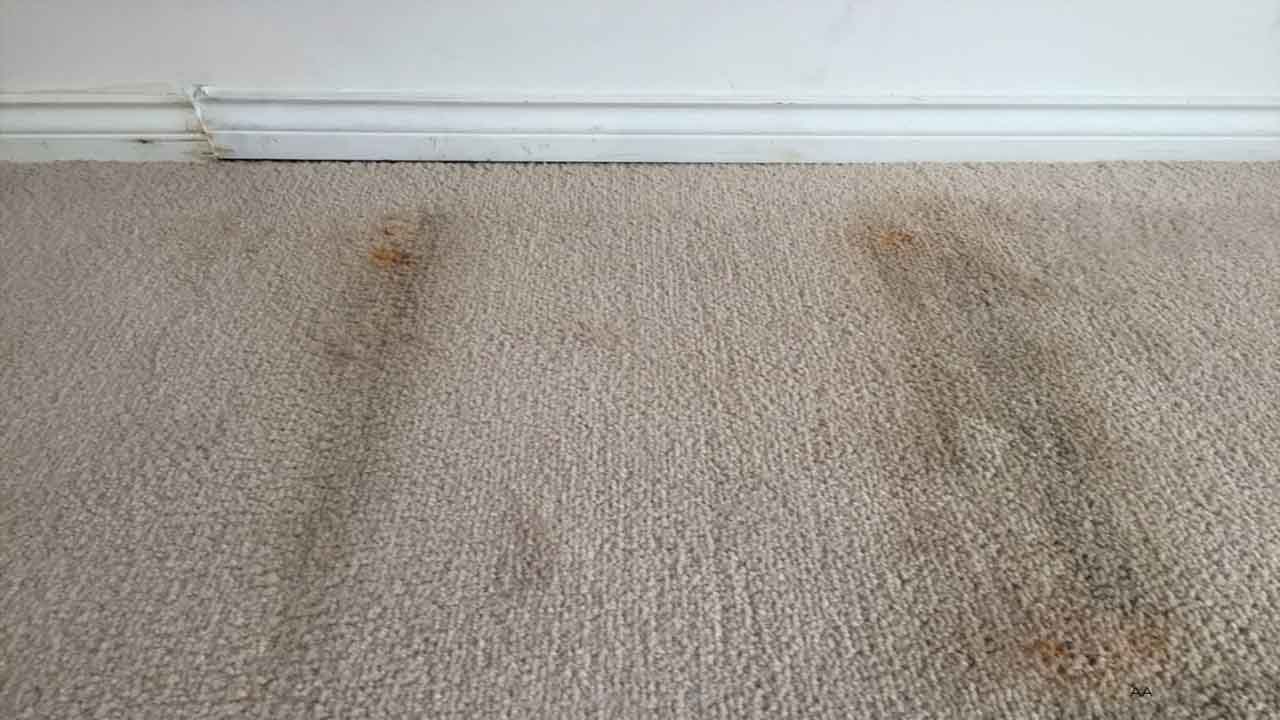
When getting mold out of carpet, sometimes it’s best to leave it to the professionals. While DIY methods can be effective for small, localized mold growth, severe mold infestations may require the expertise and equipment of a professional mold remediation company. If you have a large area of mold on your carpet or if the mold has spread to other areas of your home, it is recommended to seek professional help.
They will have the knowledge and tools to safely and effectively remove the mold, ensuring your home is free from this potentially harmful substance. Don’t hesitate to ask for professional assistance when dealing with severe mold infestations in your carpet.
Conclusion
It’s crucial to promptly address mold growth in carpets to prevent health risks and further damage. By following the proper steps on how to get mold out of carpet and using the right tools and solutions, you can effectively remove mold from your carpet. However, weighing the pros and cons of DIY mold removal versus hiring a professional, especially for severe infestations, is essential.
Remember to avoid common mistakes during removal and implement preventive measures to keep your carpet mold-free. If you’re unsure or dealing with a severe mold infestation, it’s advisable to seek professional help. Keep your carpets clean and dry to minimize the risk of future mold growth.
Frequently Asked Questions
What Kills Mold And Mildew In Carpet?
You can use natural remedies like vinegar and baking soda to kill mould and mildew in carpets effectively. Hydrogen peroxide and rubbing alcohol are also effective options. Additionally, commercial carpet cleaning solutions with antifungal properties can be used. Remember to thoroughly dry the carpet after cleaning to prevent further mold growth.
Can Moldy Carpet Be Saved?
It is possible to save moldy carpet depending on the severity of the infestation. If the mold has deeply penetrated the fibers, it may be difficult to salvage. Professional mold removal services can assess the situation and determine if the carpet can be saved or if replacement is necessary.
What Should I Consider Before I Attempt To Get Mold Out Of My Carpet?
Factors to consider before removing mold from your carpet include assessing the extent of the growth, addressing the underlying cause, using protective gear, and testing a small area for any potential damage.
Can Mold Be Completely Removed From A Carpet Or Should It Be Replaced?
Mold can be effectively removed from carpets using proper cleaning techniques and products. However, it is crucial to address the underlying moisture issue that caused the mold growth. If the mold has deeply penetrated the carpet fibers or padding, replacement may be necessary. Consult a professional for severe mold damage and removal guidance.
Is It Safe To Clean Mold From Carpets Yourself Or Should You Hire A Professional?
It is generally safe to clean mold from carpets yourself, but precautions are necessary. Wear protective gear (gloves, mask, eye protection) to avoid contact with mold spores. However, for larger areas (over 10 square feet), it may be best to hire a professional with specialized equipment and knowledge for difficult mold removal.

